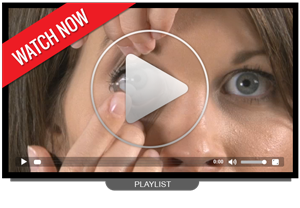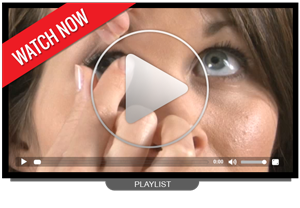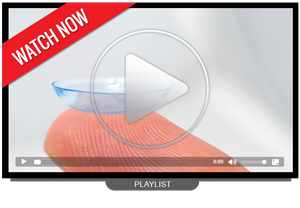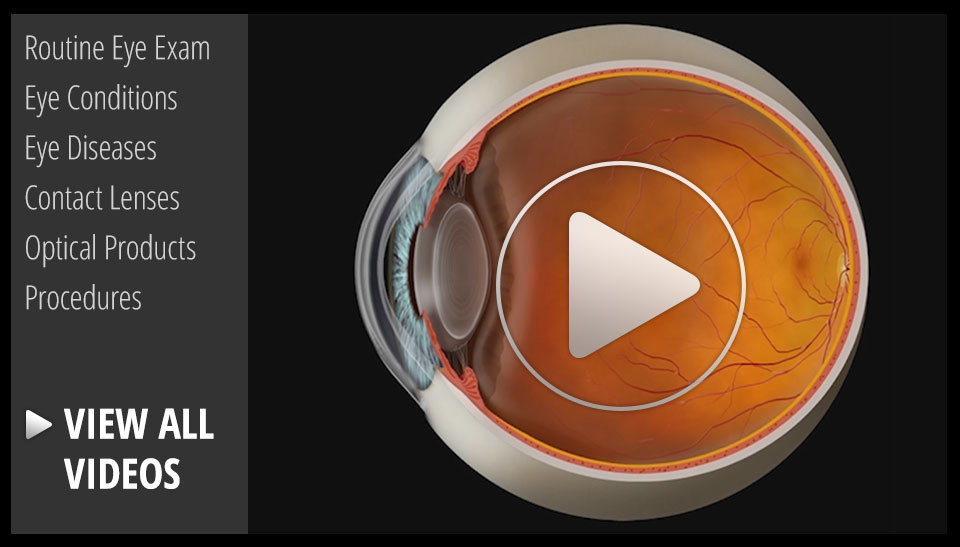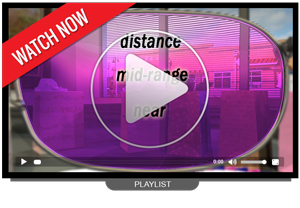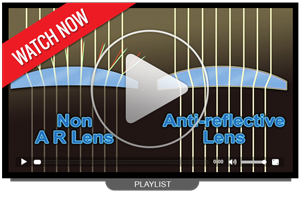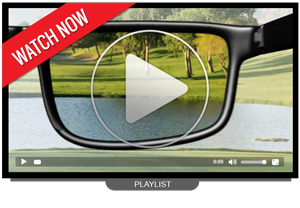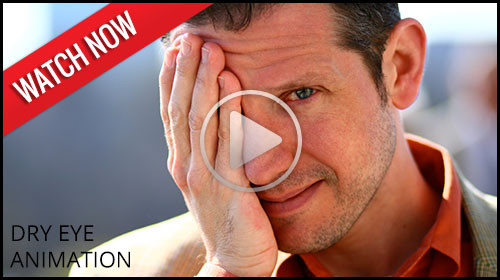News & Promotions
Featured Monthly Video
Q. Are you employed by Wal-Mart?
A. No. I am an independent doctor of optometry who chose to locate my practice at Wal-Mart, which is my landlord. I make no income from selling glasses or contacts, only from providing comprehensive exams and treating ocular disease.
Q. How can your fees be so much lower than other eye doctors? Will I receive a quality exam?
A. We provide a thorough exam with the most advanced diagnostic instruments to evaluate your vision needs and uncover any other ocular conditions that may go undetected, if not regularly monitored. I received my doctor’s degree after the same four years of training that all optometrists receive and was licensed to practice by the state after extensive testing. We can offer lower fees because our overhead is lower operating here, and we are able to keep busy seeing patients all day because of our convenient location.
Q. How much does an eye exam cost?
A. A comprehensive eye health and vision exam is $65. A basic contact lens exam is $110.
Q. Will I receive a written prescription after the exam? Will the prescription be accepted anywhere?
A. We will supply a written prescription once finalized as you leave the office.The prescription is valid anywhere in the U.S.
Q. I had an eye exam a little over a year ago, and my vision seems fine. Why do I need another exam?
A. We think it is important that all of our patients receive an annual eye exam. Your vision can change over a 12-month period. A regular check-up enables us to uncover any sight-threatening ocular conditions that can develop, unnoticed by you.
Q. Will you accept my insurance plan?
A. For the convenience of our patients, we accept most vision plans for whatever portion of the examination cost the plan covers. Please tell me your insurance company so that we can confirm your coverage.
Q. Why does it cost more for a contact lens exam?
A. We do additional testing with contact lens patients to measure the curvature of the eye to ensure that we prescribe the lens that optimizes fit and comfort. We also do an evaluation after you have worn the lenses for a given period to make sure there are no complications.
Q. Aren’t all contact lenses the same? Shouldn’t I just buy the cheapest ones?
A. They are not all the same. The contact lens companies spend millions of dollars every year to improve their lenses and regularly introduce new and better technology. You wouldn’t want to buy a five-year-old computer. For the same reason, it’s best to keep current and wear the latest and best lenses. Right now the companies are introducing new lens materials that allow much more oxygen to pass through, making them healthier to wear and enabling people to wear them in comfort for 14 hours or more per day. We recommend these new materials to most patients, even though they cost a little more, because we think they are better for their eyes in the long run.
Q. Will my contact lens prescription allow me to buy any brand of lens I want?
A. Your prescription is for a specific brand of contact lens that my examination and experience tell me is best for your vision and ocular health.
Q. Is it safe to wear a contact lens with a small tear in it?
A. A torn lens can damage the delicate outer tissue of your eye and lead to serious infection. If you tear a lens and do not have a replacement, come into the office right away and we will provide, at no charge, a lens that you can wear until your new supply arrives.
Q. Does Wal-Mart make high quality glasses? Because they cost less, will they last as long and let me see well?
A. Wal-Mart will custom-make your glasses in one of its six ultra-modern optical labs, using top quality lens and frame materials, which the company constantly seeks to upgrade. Because of Wal-Mart’s buying power and operating efficiency, you receive top-quality glasses at an everyday low price.
The cost of routine eye exams and prescription eyewear can be of real concern, especially for large families. In many cases, vision insurance can lower these annual expenses.
A vision insurance policy is not the same as health insurance. Regular health insurance plans protect you against financial losses due to unexpected eye injuries or disease. Vision insurance, on the other hand, is a wellness benefit designed to provide routine eye care, prescription eyewear and other vision-related services at a reduced cost.
Because we provide both medical and routine eye care, we accept a number of insurance plans to help cover the cost depending on your individual needs. Here are just some of the plans that we accept:
Medical Plans we Accept
- Blue Cross Blue Shield
- Gateway
- Medicare
- UPMC
Vision Plans we Accept
- Avesis
- Block Vision
- Davis Vision
- March
- NVA
- Spectera
- Superior Vision
- UPMC
We do accept other plans as well, so if you do not see your plan listed here, please give us a call and we would be happy to assist you. Our staff is also always available to answer any questions regarding your benefits.
Click images to view videos
Other brands we carry



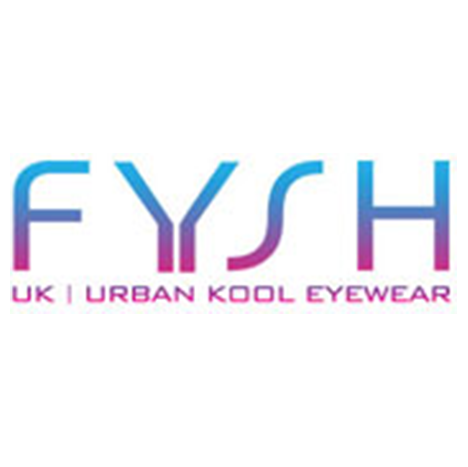





At Outlook Optometry, our professional eye care staff will be happy to assist you with your vision needs. We have treatment options available for everyone. Whether you are interested in making an appointment for a LASIK consultation, have cataracts, need an annual eye exam, or just need glasses, we can help!
Contact us today to begin scheduling an appointment using the form below, or call us directly at (724) 274-0276.
 Welcome to Outlook Optometry
Welcome to Outlook Optometry
Located conveniently Inside Walmart at Pittsburgh Mills, we have proudly served the Tarentum, PA area, including the communities of New Kensington, Lower Burrell and Natrona Heights, since 2006...
Whether through fitting you with eyeglasses or contact lenses, diagnosing and treating glaucoma cataracts, dry eye and other eye diseases—or suggesting LASIK and other eye surgeries.
Our expert optometrists and friendly staff will take the time to answer all of your and your family's questions, explain vision treatment options, and provide the highest quality eye health treatments that fit your unique personality and lifestyle.
Built on the foundation of patient convenience and satisfaction, Outlook Optometry serves all of your family’s eye care needs under one roof, including a wide array of designer eyeglass frames in our on-site frame gallery.
We're looking forward to your visit to our modern facility and friendly doctors and staff! Contact us today to schedule your next eye exam.
Our practice proudly serves the Tarentum, PA area, including the communities of New Kensington, Lower Burrell and Natrona Heights with a tradition of quality service and a friendly staff.
Drs. Hannan and Liulias take great pride in offering every patient the absolute best in vision care--whether through fitting them with eyeglasses or contact lenses, diagnosing cataracts, glaucoma, and other eye diseases, or recommending LASIK and other eye surgery procedures.
Our expert optometrists and experienced staff will take the time to answer all of your questions, explain treatment options, and provide the highest quality eye health treatments available.
Built on the foundation of patient convenience and satisfaction, Outlook Optometry serves all of your family’s eye care needs under one roof. Come visit our modern facility and friendly doctors and staff!
At Outlook Optometry you will find a caring team of professionals dedicated to providing high-quality personalized eye care for the whole family. We value our patient relationships and strive to improve your quality of life and vision wellness through uncompromised service and state-of-the-art technology. Drs. Hannan and Liulias and their staff are a close-working team dedicated to meeting the vision care needs of the people of Tarentum, PA area, including the communities of New Kensington, Lower Burrell and Natrona Heights.
Our friendly opticians are the first smiling faces you will see when you visit our office. To complement our modern facilities, our knowledgeable visual testing team work with the latest and greatest technologies to best assess the health of your eyes. Next you will meet your highly-skilled optometrist, who will complete the exam by inspecting your eyes, discussing eye care options, and answering your questions. When you visit our office, our goal is that you will leave completely satisfied and confident with your doctor, staff and services!
We invite you to refer your friends and family to our comprehensive website and our practice. If you have any questions, please feel free to contact us at our office at (724) 274-0276.
Few things affect the quality of your life more than your eyes--never put them at risk. Contact lenses are prescription medical devices. To make sure your eyes and vision stay healthy while wearing contact lenses, please follow these guidelines or the instructions recommended by your doctor.
Warning: Ocular complications and/or long-term corneal damage are the consequences of contact lenses that are worn longer than recommended. Oftentimes, your lenses will still feel fine even when you are over-wearing them. Do not wear your lenses overnight unless they are approved for extended wear and your doctor has discussed this with you. Overnight wear increases the risk of infection and other complications.
Wearing Schedule
It will take at least a few days for your eyes to get used to wearing contact lenses. The best way to insure maximum visual comfort and keep your eyes healthy is to patiently and faithfully adhere to this wearing schedule.
| Day | Gas Permeable Lenses | Soft Lenses |
|---|---|---|
| 1 | 4 hours | 6 hours |
| 2 | 6 hours | 8 hours |
| 3 | 8 hours | 10 hours |
| 4 | 10 hours | 12 hours |
| 5 | 12 hours | 12 hours |
- DON’T wear your lenses longer than 12 hours a day until your first follow-up visit with your doctor, unless the doctor has specifically told you otherwise.
- DON’T continue use of contact lenses if your eyes become red, irritated, painful, or if your vision gets worse while wearing lenses. Immediately take out the lenses and clean them. Let your eyes get back to normal and if the problem persists, contact our office.
- DON’T exceed the wearing times suggested, even if your lenses still feel comfortable. Studies have proven that the eye needs time to adapt to contact lenses, and your wearing schedule is based on those studies.
- DO always remove your contact lenses at least one hour before going to bed to allow for proper oxygen nourishment to the cornea.
- DO schedule and keep follow-up appointments with your eye doctor.
- DO wear your contact lenses for at least 4 hours the day of your follow-up appointment unless you are experiencing discomfort.
Please Note: If you complete your wearing schedule for a given day and take out your lenses for at least 2 hours, you can wear them the same day for another 2 to 3 hours after cleaning and disinfecting them.
Caring For Your Contacts
Deposits and infectious organisms, such as bacteria and viruses, can build up on the surface of all contact lenses. For this reason, it is very important to keep them clean and disinfected.
 There are four steps in contact lens care--follow the care prescribed for your lenses:
There are four steps in contact lens care--follow the care prescribed for your lenses:
- Cleaning removes dirt, mucous, and other debris that gets on the lenses during wear.
- Disinfecting kills bacteria (germs) on the lenses. Disinfecting is essential to prevent serious eye infections.
- Rinsing removes the other solutions from the lenses and prepares the lenses for wear.
- Enzyming uses enzyme drops or tablets to remove protein and other deposits that build up over time on the lenses.
The best way to properly care for your lenses is to develop a care routine, then stick to that routine! Remember to:
- Follow the directions outlined by your eye doctor. Oftentimes instructions are also listed on the packaging or the package insert for the contact lens solutions prescribed for you.
- Multi-purpose solutions can be used for more than one step in contact lens care. Read the label to see which functions the solutions can be used for.
- Many solutions can not be used together, and not all solutions are appropriate for all types of lenses. Only use solutions recommended by your eye doctor, and check with your eye doctor if you want to switch brands.
- When you remove your lenses, they must be cleaned, rinsed, and disinfected before they are worn again.
- Enzyming and cleaning are not a substitute for disinfecting.
- Lenses that have been stored for more than 12 hours may need to be cleaned, disinfected, and rinsed again.
- Make sure solution containers are kept closed tightly, stored upright, and kept in a clean, dry, cool place when you are not using them. Keep your case clean and replace it every 2-3 months to prevent bacterial growth.
- Don’t touch container bottle tips to any surface to prevent them from becoming contaminated.
- Throw away expired solutions. (Look on the bottle for the expiration date!)
- Use new solution in your contact lenses case every day.
- Discuss with your eye doctor the care for your lenses if you wear them while swimming in a pool or hot tub.
- Only use approved rewetting drops for lubricating or wetting your lenses. Never place the lenses in your mouth.
- Do not use tap water to rinse soft contact lenses.
- Be careful with makeup, lotions, creams and sprays--consider putting on lenses before makeup and remove them before removing makeup. Also, water-based makeup is less likely to damage lenses than oil-based makeup.
Here’s what you need to watch for: redness, blurriness, light sensitivity. Remove your lenses if you are experiencing any of these 3 things. If your eyes have not returned to normal after 24 hours, please contact our office. If you have any change in vision, comfort, or irritation, immediately remove your lenses. If there is no improvement within a couple of hours, please contact our office.
Welcome to the Outlook Optometry video learning center! Please call our office at (724) 274-0276 if you have any questions about the conditions you see here.
At Outlook Optometry, our professional eye care staff will be happy to assist you with your vision needs. We have treatment options available for everyone. Whether you are interested in making an appointment for a LASIK consultation, have cataracts, need an annual eye exam, or just need glasses, we can help!
Contact us today to begin scheduling an appointment using the form below, or call us directly at (724) 274-0276.
Conveniently Located Inside Walmart at Pittsburgh Mills in Tarentum, PA.
We'd like to welcome you to our newly minted website. We have taken great care to ensure this site keeps you better informed about Outlook Optometry and to provide relevant information in an easy to understand way.
Please vist our page often as we will be updating with specials and promotions throughout the year. While you are here please take time to visit our Video Learning center, in the Eye Health drop down, where you can view our entire library of eye related videos.
While we don't offer vision products, we're conveniently located inside the Walmart Vision Center, which does!
We've provided some basic information on vision products throughout this website, but if you have questions about the specific products that Walmart offers, please feel free to call or email us and we'll help find an answer.
For many people, different lenses are needed for seeing at different distances. Bifocal lenses allow the wearer to look through two areas of the lens. One area focuses on distant objects. The other is used for reading. A little-known fact is that bifocals were invented by Benjamin Franklin, and his style of bifocals are still available today.
Most of the time the “reading” area is smaller, shaped like a sideways “D”, and found in the lower hemisphere of the lens. These bifocals are called line bifocals or flat-tops. If you are focusing on distant objects, you look through the top half of the lenses. To read a book, magazine, or newspaper, you look through the “reading” area. The Franklin style lenses are less common, and are split horizontally down the middle of each lens. One thing that is difficult about using bifocals is dealing with the line between the two vision areas. Fortunately, recent technologies have developed a new type of lens, called the no-line, or progressive, lens.
One of the main problems with bifocal and trifocal lenses is the issue of eye fatigue. It can be difficult to switch from one focusing power to another. Your eyes can tire, which can even lead to a headache, sore neck and sore back.
A variation of bifocals and trifocals is the no-line lens or progressive lens. No-lines provide a smooth transition from focusing on nearby to distant objects because they do not have a distinct line separating the focusing powers. Instead, a gradual change in power allows the wearer to focus on objects at all distances. Distant objects are viewed through the upper portion of the lens, while near objects are viewed through the middle or lower portion of the lens. These are also great for computer users.
Bifocals allow the wearer to read through one area of the lens, and to focus on distant objects through another area of the lens. As the eyes age, though, a stronger prescription is often needed to read. This would be fine, but the stronger prescription that allows for reading makes it difficult to focus on objects at intermediate distances, such as grocery items on a shelf or your speedometer. Thus, trifocals are necessary for a third prescription for intermediate focusing.
Trifocals, also known as line trifocals, feature three areas of focusing power, each separated from the other by a distinct line. The three windows allow for focusing on distant objects, intermediately distanced objects, and for reading. The downside of trifocals is dealing with the lines between the different focusing powers. Fortunately, recent advances in technology have led to developments in no-line, or progressive lenses.
Previous to the last few years, the only materials available for use as lenses were glass and a hard resin called CR-39. But recently, high index lenses have become available. High index materials are named because they have a higher index of light refraction. Basically, they can do the same job that glass or CR-39 does, but high index lenses are much thinner and lighter. With high index lenses, you can avoid having “soda bottle” lenses.
When learning about high index lenses, you may hear many unfamiliar numbers and terms. Here are a few things to remember.
Polycarbonate
The first and still the most popular high index plastic is polycarbonate. Polycarbonate was originally developed for fighter jet cockpits. It is very strong, very light, and resistant to scratches and breaking. Most sports lenses are made of polycarbonate.
Mid-Index
Other high index materials are classified by numbers. The higher the number, the thinner and lighter the lens. The lower numbers are classified as mid-index lenses. Mid-index lenses, such as 1.54, 1.56, and 1.57, are thinner than glass, and nearly as strong as CR-39.
High-Index
High index lenses are much thinner than regular glass or plastic. Talk with your doctor to decide which high index lens is right for you.
Normal eyewear often creates glare, reflections, and “ghost images.” Now all that can be eliminated with an anti-reflective coating.
What we see is a result of light being sensed by our eyes. With normal glasses, much of the light reflects off the lenses. This produces glare. It also reduces the wearer’s visual acuity. In other words, the light reflection is both a cosmetic and visual problem.
Anti-reflective coatings increase light transmission through the lenses to 99.5 percent. They make it easier to see and easier for others to see you. These coatings are especially useful for those viewing computer screens and driving at night.
Glare from wet roads, light reflecting off other vehicles, and glare from your own windshield can be annoying and dangerous. To eliminate this glare, we offer polarized lenses. Polarized lenses eliminate the majority of glare, reducing eye strain and increasing visibility. Polarized lenses are the most effective means to reduce glare.
Most glare comes from horizontal surfaces, so the light is “horizontally polarized.” Polarized lenses feature vertically-oriented “polarizers.” These polarizers block the horizontally-polarized light. The result is a glare-reduced view of the world. Polarized lenses can make a world of difference for any outdoor enthusiast. Fisherman can eliminate the bright reflections from the water and actually see into the water more easily than with other sunglasses, golfers can see the green easier, and joggers and bikers can enjoy reduced glare from the road. In addition, drivers can enjoy the safety and comfort that polarized lenses provide while driving.


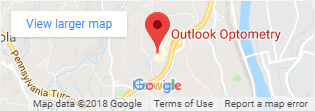
 The Backgrou...
The Backgrou...


